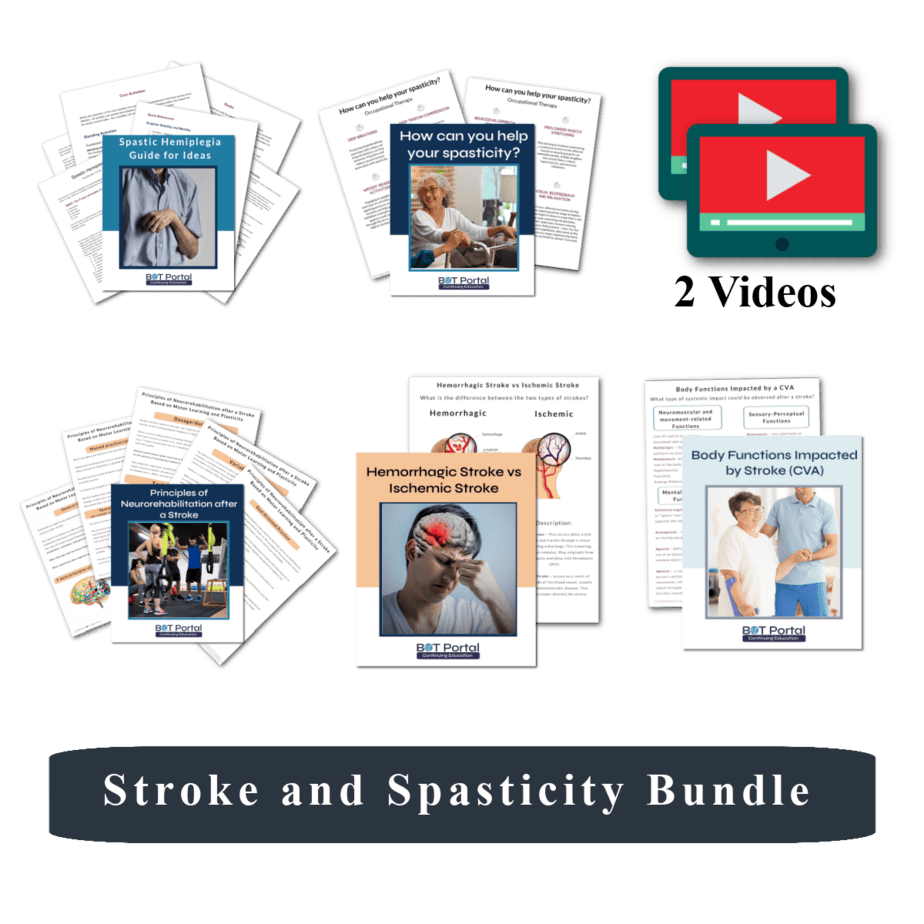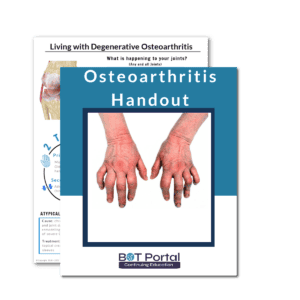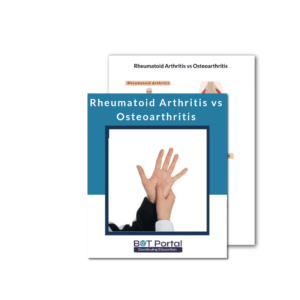Description
Stroke Resources and Spastic Hemiplegia Bundle
Rehabilitation resources to help patients recovering from or living with symptoms of stroke
The Stroke Resources and Spastic Hemiplegia bundle is an invaluable resource for practitioners looking to enhance their understanding and treatment of stroke and spastic hemiplegia. It provides evidence-based information and practical tools to support effective rehabilitation.
Stroke, also known as a cerebrovascular accident (CVA), occurs when the blood supply to a part of the brain is interrupted or reduced, preventing brain tissue from getting oxygen and nutrients. Brain cells begin to die within minutes, leading to neurological deficits that vary based on the location and severity of the stroke. One common and debilitating outcome of stroke is spastic hemiplegia, which refers to the paralysis and abnormal muscle tightness (spasticity) on one side of the body. This condition significantly impacts mobility, coordination, and overall quality of life, necessitating a comprehensive and multifaceted approach to rehabilitation.
Rehabilitation for spastic hemiplegia post-stroke focuses on improving motor function, reducing spasticity, and enhancing the patient’s ability to perform daily activities. The rehabilitation process typically involves a combination of physical therapy, occupational therapy, and sometimes speech therapy, tailored to the individual needs of the patient. The primary goals are to restore movement, prevent complications, and promote as much independence as possible.
The stroke resources bundle includes:
1. Resource for Tools on Amazon
A one-page guide lists various tools available for purchase through Amazon that are beneficial in treating spastic hemiplegia. These tools can include adaptive equipment, therapeutic devices, and assistive technologies designed to facilitate exercises, improve motor function, and manage spasticity.
2. Body Functions Impacted by Stroke
An overview of the body functions commonly affected by stroke, including motor skills, sensory perception, speech and language, cognitive abilities, and emotional regulation. This resource helps practitioners understand the wide-ranging impact of stroke and tailor their interventions accordingly.
3. Common Symptoms of CVA by Arterial Supply
This section details the typical symptoms associated with strokes in different arterial regions of the brain. Understanding the relationship between arterial supply and stroke symptoms allows practitioners to more accurately diagnose and develop targeted treatment plans.
4. Spasticity Methods for the Treatment of High Tone
A guide to various methods used to manage spasticity in patients with high muscle tone.
5. Common Functions Based on Lobes
An informative breakdown of the functions associated with each lobe of the brain and how strokes affecting these areas manifest clinically. This knowledge is crucial for developing specific rehabilitation strategies aimed at the functional deficits observed in the patient.
6. Spastic Hemiplegia Treatment Ideas for Practitioners
A collection of innovative and effective treatment ideas specifically for practitioners working with patients who have spastic hemiplegia. These ideas include exercise routines, functional training activities, and therapeutic techniques to enhance recovery and improve outcomes.
7. Video Example of Spastic Hemiplegia Activity (~4 minutes)
8. Video Instruction on Hypertonicity Management (~17 minutes)
What is included?
- 1 pg resource for tools you can purchase through Amazon that are helpful for the treatment of spastic hemiplegia
- Body Functions impacted by stroke
- Common symptoms of CVA by arterial supply
- Spasticity Methods for the treatment of high tone
- Common functions based on lobes
- Spastic hemiplegia treatment ideas for practitioners
- Video Example of Spastic Hemiplegia Activity (~ 4 minutes)
- Video Instruction on Hypertonicty Management (~17 minutes)




